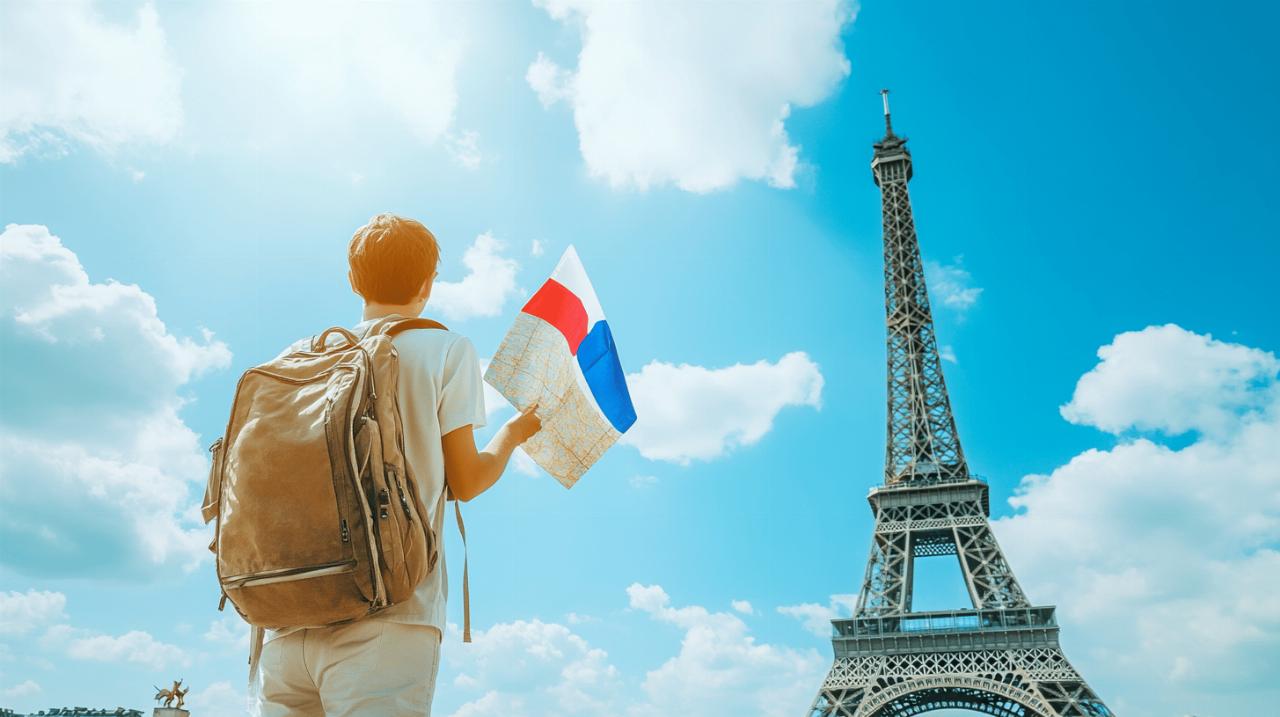Thailand offers an intoxicating blend of vibrant culture, stunning landscapes, and warm hospitality that draws travellers from across the globe. Yet, as you prepare to explore this captivating Southeast Asian nation, understanding what to wear can be as crucial as booking your flights or securing your accommodation. The tropical climate and deeply rooted traditions mean that packing the right clobber isn't just about comfort; it's about showing respect for local customs whilst ensuring you enjoy every moment of your adventure, whether you're wandering through the bustling streets of Bangkok or soaking up the sun on the idyllic shores of Koh Samui.
Dressing for Thailand's Climate: Fabric Choices and Sun Protection Essentials
Selecting breathable materials for tropical comfort
When packing for Thailand, the key to staying comfortable in the hot and humid climate lies in choosing the right fabrics. Linen emerges as the absolute champion for keeping cool, thanks to its natural breathability and ability to wick moisture away from your skin. Cotton is another excellent choice, offering a soft feel and allowing air to circulate freely. Quick-dry and UPF fabrics also deserve a place in your suitcase, especially if you plan on island hopping or engaging in water-based activities. These materials ensure that you won't find yourself squelching around in damp clothing after an unexpected tropical downpour or a refreshing dip. On the flip side, you'll want to avoid packing polyester and denim, as these fabrics trap heat and moisture, leaving you feeling rather uncomfortable in the sweltering weather. Loose-fitting clothes in light colours not only help reflect the sun's rays but also create a barrier of air that keeps you cool. Think flowing trousers, airy shirts, and light skirts that allow maximum ventilation whilst maintaining a modest appearance that aligns with local sensibilities.
Essential sun protection gear: hats, sunglasses, and sun cream
The Thai sun can be rather fierce, so proper sun protection is absolutely essential to avoid spending your holiday looking like a lobster. A wide-brimmed hat offers shade for your face and neck, whilst a good pair of sunglasses protects your eyes from harmful UV rays. High SPF sunscreen should be at the top of your packing list, and it's worth investing in reef-safe formulations containing zinc oxide or titanium oxide rather than chemicals that damage marine ecosystems. These reef-safe sunscreens are particularly important if you're planning to snorkel or swim in Thailand's pristine waters. Do bear in mind that imported sunscreen brands can be rather pricey in Thailand, so stocking up before you leave home is a sensible move. When applying your sun protection, remember the proper order: slap on the sunscreen first, wait between ten and twenty minutes for it to absorb properly, then apply mosquito repellent over the top. A lightweight scarf proves incredibly versatile, serving double duty as both sun protection and a modest covering for temple visits. Consider packing a small waterproof backpack to keep your sun protection essentials dry during those sudden downpours that characterise Thailand's tropical climate.
Temple etiquette: what to wear when visiting sacred spaces
Covering shoulders and knees: understanding modest dress requirements
Thailand's temples are not merely tourist attractions; they are sacred spaces where modest dressing demonstrates respect for Buddhist culture and traditions. The cardinal rule when visiting these spiritual sites is ensuring that both your shoulders and knees remain covered at all times. This means leaving the vest tops and short shorts back at your hotel, regardless of how scorching the weather might be. For women, a flowing long skirt paired with a lightweight shawl or kimono creates an ideal temple outfit that's both respectful and comfortable. Men should opt for light trousers and a collared shirt, avoiding anything too revealing or tight-fitting. Thailand is a modest country where covering up is generally preferred over exposing too much skin, and this principle extends beyond temple grounds into everyday interactions. If you're caught out without appropriate attire, many temples provide sarongs or wraps for visitors, though arriving properly dressed shows greater consideration. Avoid wearing clothing emblazoned with potentially offensive images or slogans, as these can cause genuine upset. The Thai people appreciate visitors who make an effort to honour their customs, and dressing appropriately for temple visits is one of the simplest yet most meaningful ways to demonstrate this respect.
Practical footwear tips for temple visits
Navigating temple visits requires not just modest clothing but also appropriate footwear that can be easily removed. Before entering any sacred building in Thailand, you'll need to remove your shoes, a custom that keeps the interior spaces clean and shows reverence. Slip-on shoes, sandals, or lightweight trainers without complicated laces make this process considerably easier, especially when you're visiting multiple temples in a single day. Comfortable sandals prove particularly practical, as they keep your feet cool in the tropical heat whilst being effortlessly removed and put back on. Flip-flops work well for beach areas and casual temple visits, though they might not provide sufficient support for extended walking tours around larger temple complexes. A decent pair of walking shoes or trainers becomes invaluable when exploring urban areas like Bangkok, where you'll likely cover significant distances on foot. Consider packing at least two versatile pairs of footwear: one for active exploration and another for beach and casual wear. Avoid bringing expensive jewellery or flashy accessories that might draw unwanted attention, and instead focus on practical items that enhance your comfort and mobility throughout your travels.
Beach Attire and Urban Style: Balancing Comfort with Cultural Sensitivity
Appropriate Swimwear and Cover-Ups for Coastal Destinations
 Thailand's stunning coastline beckons with crystal-clear waters and powdery white sands, particularly around popular destinations like Koh Samui where beach culture thrives. On the beach itself or by the pool, standard swimwear such as bikinis and trunks are perfectly acceptable, allowing you to enjoy the sun and sea without worry. However, topless sunbathing remains a cultural taboo and should be avoided out of respect for local sensibilities. The crucial point to remember is that what's appropriate on the sand becomes rather less so once you venture into shops, restaurants, or any public spaces away from the beach. A lightweight cover-up, such as a flowing kimono, sarong, or casual sundress, should always accompany you when leaving the beach area. This simple act of covering up demonstrates cultural awareness and prevents awkward situations or disapproving glances from locals. Pack multiple swimsuits if you're planning extended beach time, as this allows one to dry whilst you wear another. Quick-dry fabrics prove especially useful here, ensuring your swimwear is ready for another dip even in humid conditions. Beach parties and coastal celebrations offer more relaxed dress codes, but maintaining a baseline level of modesty remains important even in these more casual settings.
Thailand's stunning coastline beckons with crystal-clear waters and powdery white sands, particularly around popular destinations like Koh Samui where beach culture thrives. On the beach itself or by the pool, standard swimwear such as bikinis and trunks are perfectly acceptable, allowing you to enjoy the sun and sea without worry. However, topless sunbathing remains a cultural taboo and should be avoided out of respect for local sensibilities. The crucial point to remember is that what's appropriate on the sand becomes rather less so once you venture into shops, restaurants, or any public spaces away from the beach. A lightweight cover-up, such as a flowing kimono, sarong, or casual sundress, should always accompany you when leaving the beach area. This simple act of covering up demonstrates cultural awareness and prevents awkward situations or disapproving glances from locals. Pack multiple swimsuits if you're planning extended beach time, as this allows one to dry whilst you wear another. Quick-dry fabrics prove especially useful here, ensuring your swimwear is ready for another dip even in humid conditions. Beach parties and coastal celebrations offer more relaxed dress codes, but maintaining a baseline level of modesty remains important even in these more casual settings.
Casual Clothing for Bangkok Shopping and City Exploration
Bangkok presents a different sartorial challenge, blending modern urban sensibilities with traditional Thai values. When exploring the city's shopping centres, markets, and cultural attractions, casual clothing works perfectly well, though dressing slightly nicer than you might at home often results in better service and more positive interactions. Loose skirts, light trousers, and airy shirts strike the ideal balance between comfort and appropriateness for city adventures. Avoid overly revealing clothing that exposes too much skin, as Thai culture generally favours modest presentation even in cosmopolitan areas. Comfortable footwear becomes absolutely essential when pounding the pavements of Bangkok, where you'll likely walk considerably more than anticipated. The city's mix of ancient temples, bustling markets, and gleaming shopping complexes means your outfit needs versatility to transition seamlessly between different environments. A lightweight long-sleeved shirt or sweatshirt proves useful for heavily air-conditioned spaces like shopping centres and restaurants, where the temperature difference can be quite dramatic. Thailand offers affordable clothing and tailoring services, so if you find yourself lacking appropriate attire, picking up a few items locally presents an excellent solution whilst supporting local businesses.
Seasonal Considerations and Special Events: Preparing for Rain and Full Moon Parties
Rainy season essentials: waterproof jackets and quick-drying clothing
Thailand's rainy season runs from June through October, bringing sudden downpours that can drench you within minutes if you're caught unprepared. A lightweight waterproof jacket or raincoat becomes your best friend during these months, offering protection without adding excessive weight to your luggage. Quick-drying fabrics for your clothing mean you won't spend hours feeling uncomfortable in soggy garments, even if you do get caught in a tropical deluge. Consider bringing a waterproof cover for your backpack to keep electronics, documents, and other valuables dry during unexpected showers. Avoid wearing white clothing during rainy periods unless you fancy an impromptu wet t-shirt situation, as light colours become rather transparent when saturated. Mosquito repellent gains added importance during the rainy season when these insects become more active, particularly in the evenings. Apply it after your sunscreen has had time to absorb properly, creating an effective barrier against these persistent pests. The cool season from November through February offers the most pleasant weather for visiting Thailand, though you'll still want to pack layers for the occasional cooler evening. The hot season spanning March to May brings the most intense heat, making lightweight, breathable clothing and sun protection absolutely critical for comfortable exploration.
Festive dress codes: navigating beach parties whilst maintaining respect
Thailand's famous full moon parties and other festive gatherings offer opportunities for more creative self-expression through clothing, with costumes and vibrant outfits adding to the celebratory atmosphere. These events maintain a more relaxed dress code compared to everyday temple visits or city exploration, allowing you to embrace a wilder side whilst still exercising good judgement. Even during these celebrations, breathable fabrics remain your friend, keeping you comfortable as you dance through balmy tropical evenings. Traditional Thai festivals such as Songkran, the water festival held in April, and Loy Krathong, the lantern festival in November, each come with their own informal dress codes that blend practicality with cultural appreciation. For Songkran, expect to get absolutely drenched, so quick-dry clothing and waterproof protection for valuables become essential. Loy Krathong calls for slightly more elegant attire as you release your lantern, though comfort remains paramount. The Vegetarian Festival presents another unique occasion where modest white clothing is traditionally worn by participants. Packing one nice outfit for potential fancy occasions, such as upscale restaurants or nightclubs, ensures you're prepared for any eventuality. For gentlemen, this might mean a collared shirt and light trousers, whilst ladies might opt for a sundress or elegant jumpsuit that maintains both style and comfort in the tropical climate.






